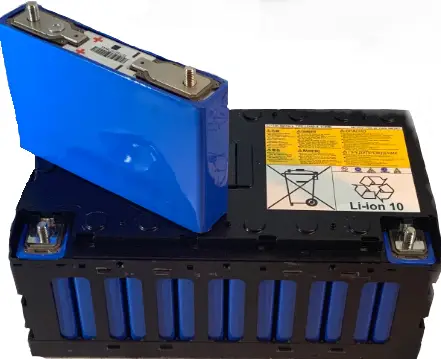Introduction
Lithium-ion batteries are a type of rechargeable battery that has become increasingly popular in recent years.
These batteries are used in a wide
Benefits of Lithium-Ion Car Batteries
Lithium-ion car batteries have several benefits over traditional lead-acid batteries, including:
Higher energy density – Lithium-ion batteries have a higher energy density than lead-acid batteries, which means they can store more energy in the same amount of space. This is important in electric vehicles, where space is at a premium.
Faster charging – Lithium-ion batteries can be charged more quickly than lead-acid batteries. This is because lithium-ion batteries can accept a higher charge current without overheating or damaging the battery.
Longer lifespan – Lithium-ion batteries have a longer lifespan than lead-acid batteries. This is because they can be charged and discharged more times before they start to degrade.
Lower maintenance – Lithium-ion batteries require less maintenance than lead-acid batteries. They don’t need to be topped up with water, and they don’t need to be equalized like lead-acid batteries do.
Lightweight – Lithium-ion batteries are lighter than lead-acid batteries, which can help to improve the overall efficiency of the vehicle.
Higher efficiency – Lithium-ion batteries are more efficient than lead-acid batteries, which means they waste less energy during charging and discharging.

Drawbacks of Lithium-Ion Car Batteries
Despite their benefits, lithium-ion car batteries also have some drawbacks, including:
Higher cost – Lithium-ion car batteries are more expensive than lead-acid batteries. This is partly because of the cost of the raw materials used to make the batteries.
Limited availability – Lithium-ion car batteries are still relatively new, which means that they are not yet widely available. This can make it difficult for manufacturers to source the batteries they need.
Limited lifespan – Although lithium-ion batteries have a longer lifespan than lead-acid batteries, they still have a limited lifespan. This means that they will eventually need to be replaced.
Safety concerns – Lithium-ion batteries have been known to catch fire or explode if they are damaged or exposed to high temperatures. This can be a safety concern in electric vehicles.
What is the charging voltage amp on lithium-ion battery?
The charging voltage and current for a lithium-ion battery depend on its capacity, chemistry, and manufacturer’s specifications. In general, the charging voltage for a lithium-ion battery is between 3.6 to 4.2 volts per cell, and the charging current can be up to 1C, where C is the capacity of the battery in ampere-hours. For example, if you have a 2000mAh (milliamp-hour) battery, the maximum charging current should be around 2 amps.
It’s important to follow the manufacturer’s recommended charging specifications for your specific lithium-ion battery to ensure safe and proper charging. Overcharging a lithium-ion battery can lead to safety hazards, such as fire or explosion.
Here are some general specifications for a lithium-ion car battery:
- Voltage: A typical lithium-ion car battery has a voltage of 12 volts, which is the same as a traditional lead-acid battery. However, some electric vehicles may use higher voltage batteries to achieve longer ranges.
- Capacity: The capacity of a lithium-ion car battery is measured in ampere-hours (Ah) and determines how much energy the battery can store. A typical car battery has a capacity of around 60 Ah, but electric vehicles may have much larger batteries with capacities of several hundred Ah.
- Energy density: Lithium-ion batteries have a higher energy density than lead-acid batteries, which means they can store more energy in the same amount of space. A typical lithium-ion car battery has an energy density of around 100-200 watt-hours per kilogram (Wh/kg).
- The cycle life of a battery refers to the number of times it can be charged and discharged before it starts to degrade. A typical lithium-ion car battery can handle several thousand cycles before it needs to be replaced.
- Charging time: Lithium-ion batteries can be charged much faster than lead-acid batteries, which makes them ideal for use in electric vehicles. The charging time for a lithium-ion car battery can vary depending on the charging rate and the size of the battery.
- Operating temperature: Lithium-ion batteries can be sensitive to temperature, and their performance can be affected by extreme heat or cold. A typical lithium-ion car battery can operate within a temperature range of -20°C to 60°C.
- Safety features: Lithium-ion batteries can be prone to overheating and catching fire if they are not designed and manufactured properly. As a result, most lithium-ion car batteries will have built-in safety features such as thermal management systems and circuit protection to prevent overcharging and over-discharging
Lithium-ion batteries are a type of
rechargeable batteries that are commonly used in portable electronics, electric vehicles, and grid energy storage systems. They work by using lithium ions to transport energy between two electrodes, which are typically made of graphite and a lithium-metal oxide compound such as lithium cobalt oxide, lithium iron phosphate, or lithium manganese oxide.
The battery consists of a positive electrode (cathode), a negative electrode (anode), and an electrolyte that separates them. The cathode is typically made of a lithium-metal oxide compound, while the anode is typically made of graphite. When the battery is charged, lithium ions are extracted from the cathode and move through the electrolyte to the anode, where they are stored. When the battery is used, the lithium ions move back through the electrolyte to the cathode, releasing energy that can be used to power a device.
During charging, an external power source is used to apply a voltage to the battery, which causes the lithium ions to move from the anode to the cathode, where they are stored. This process is reversible, so the battery can be discharged by connecting it to a device that draws power from the cathode and returns the lithium ions to the anode through the electrolyte.
Lithium-ion batteries are popular because they have a high energy density, meaning they can store a lot of energy in a small space. They are also lightweight, have a long cycle life, and can be recharged many times before they need to be replaced.

0 Comments